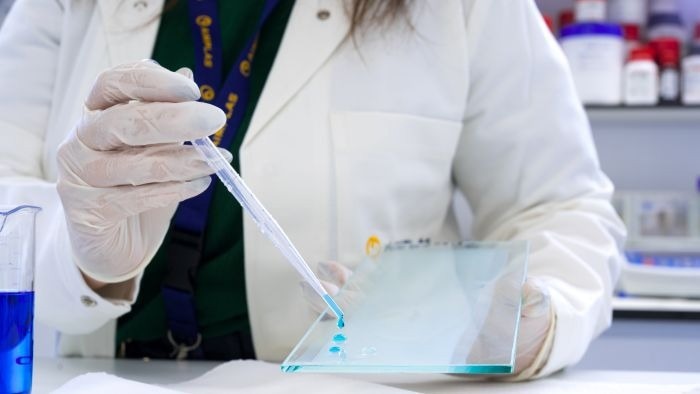The DACCO2 project works with materials with high adsorption capacity and photocatalytic properties capable of capturing and/or oxidizing pollutants and transforming them into compounds with low or no toxicity.
Laurentia Technologies, Alfarben, and Toldos Costa Blanca are collaborating on this research to improve urban air quality, funded by IVACE+i and the ERDF.

Image Credit: AIMPLAS
Air pollutants are considered one of the main causes of numerous diseases and pose a significant environmental risk, making it essential to find solutions to mitigate this issue. The DACCO2 project, led by the Plastics Technology Centre (AIMPLAS), aims to improve urban air quality by significantly reducing pollutants in both indoor and outdoor environments through the development of active coatings capable of directly adsorbing and/or transforming these pollutants into less harmful compounds.
The coatings developed in the DACCO2 project are designed for use on furniture surfaces, specifically in paints and waterproof fabrics.
Pilar Cumplido, AIMPLAS researcher in Decarbonization, explained: “With this project, we aim to advance technologies that can improve air quality and are both effective and economically viable so that sectors such as paint and textiles can adopt them.” Laurentia Technologies, Alfarben, and Toldos Costa Blanca are collaborating with AIMPLAS on this research to enhance urban air quality.
She added, “DACCO2 also has a complementary goal of informing and raising awareness in society about the issue of air pollution. That’s why we are also conducting a detailed study of the main pollutants found in indoor and outdoor areas of various urban zones in the Valencian Community.”
The first challenge of the DACCO2 project is the development of materials with high adsorption capacity and/or pollutant transformation capabilities. Adsorption capacity refers to the ability to retain air pollutants effectively removing them from the surrounding air. As for transformation capacity, the research focuses on materials with photocatalytic properties—materials that, using only solar energy, can oxidize air pollutants and convert them into compounds with low or no toxicity.
In both cases, these are direct air capture (DAC) technologies. The goal is to combine both technologies for greater overall effectiveness, ensuring that one does not negatively impact the other. The second challenge is to incorporate the developed materials into various coating matrices while maintaining their adsorption and/or photocatalytic capabilities.
Regarding the pollutant study, the project is analyzing their concentrations by comparing measured values with the limits set by the World Health Organization (WHO), assessing their health and environmental impacts, and identifying their main sources of emission.
This project is part of the IVACE+i aid program for non-economic R&D projects carried out by technology centers in the Valencian Community in collaboration with companies for the 2024 fiscal year. It is funded by the European Union’s European Regional Development Fund (ERDF) under the 2021–2027 Operational Program.
About AIMPLAS
At AIMPLAS, the Plastics Technology Centre, we are committed to building a better world by promoting sustainable innovation in the field of plastics. Our goal is to support companies in creating wealth and employment, while helping to address major societal challenges.
We provide comprehensive, tailored solutions that include R&D&I projects, training, competitive and strategic intelligence, technical and legal consultancy, as well as technological services such as analysis and testing.
We are firmly committed to sustainability and actively contribute to the 17 United Nations Sustainable Development Goals (SDGs) through both our operations and our social responsibility initiatives.
As a member of the Network of Technological Institutes of the Valencian Region (REDIT), we are further empowered to deliver value and foster knowledge transfer within the business community.
